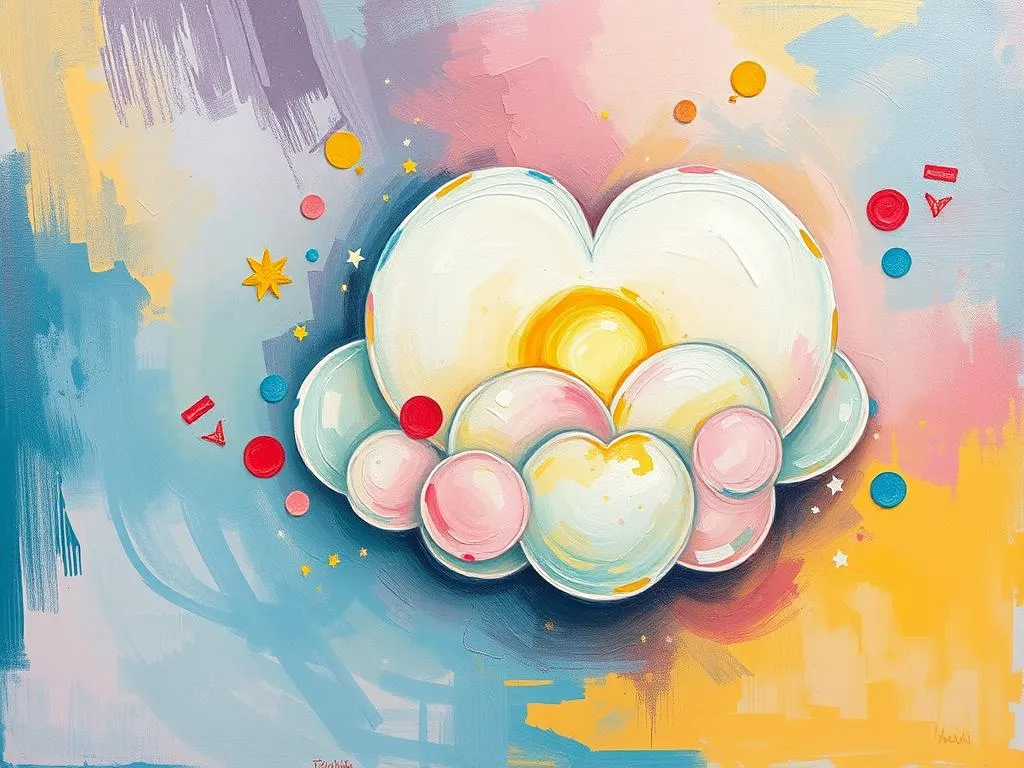
Have you ever woken up from a dream and felt as though you had just traversed a secret landscape? One that seemed so vivid and meaningful, yet left you scratching your head as you tried to decipher its significance? Dreams are not just fanciful narratives; they are the whispers of our subconscious, rich with symbolism and insights that can illuminate our waking lives. In this exploration, we’ll delve into the intriguing world of dream symbolism, uncovering the layers of meaning that shape our nocturnal journeys.
As we embark on this journey, let’s remember that every dream is a personal tapestry, woven with threads of our experiences, emotions, and cultural backgrounds. Whether you dream of flying through the clouds or being chased by shadows, each symbol can reveal something profound about your inner world. So, grab a cup of tea, settle in, and let’s discover the hidden messages in your dreams.
Dream Symbols: The Language of the Subconscious
Dreams speak in a language all their own—a language rich with symbols that often draw from our personal experiences, cultural backgrounds, and even universal human themes. Symbolism in dreams can be likened to a treasure map that leads us to the deeper meanings of our thoughts and emotions. For instance, dreaming of water often signifies emotions; it can represent a flood of feelings or the depths of the unconscious mind.
Understanding these symbols can empower us to navigate our emotional landscapes. Common symbols include:
- Animals: Often represent instincts or qualities we associate with them. A lion may symbolize courage, while a snake might indicate transformation or hidden fears.
- Buildings: These can reflect our self-image or life circumstances. Climbing a staircase in a building may represent progress, while being trapped in a basement could signify feelings of being stuck.
- Flight: To soar in a dream can indicate freedom and aspiration, while falling often represents loss of control or fear of failure.
- Masks: Wearing a mask may suggest feelings of hiding one’s true self or adopting a persona to navigate social situations.
Each symbol can manifest differently depending on cultural interpretations. For example, in Eastern cultures, dreaming of a dragon may be seen as a good omen, symbolizing power and strength, while in Western cultures, it might evoke fear or danger. Understanding the cultural context of your symbols can help unravel their meanings further.
Dreams in Action: Scenarios and Reflections
To better illustrate how dream symbols manifest in different scenarios, let’s look at a few common dream experiences. These dreams might resonate with you or spark memories of your own nocturnal narratives.
1. The Towering Inferno
Imagine dreaming of a tower engulfed in flames. In this scenario, you might feel a mix of fear and urgency as you witness the blaze. Fire often symbolizes transformation or destruction, and in this case, the tower might represent an aspect of your life—perhaps a relationship or career—undergoing a significant change. The flames could signify the intensity of your feelings about this transformation, urging you to confront it rather than avoid it.
2. The Endless Maze
Next, consider a dream where you find yourself lost in an endless maze. You wander through labyrinthine corridors, trying to find your way out. This scenario can symbolize feelings of confusion or being trapped in a situation in your waking life. The maze reflects your struggle to navigate a complex problem, suggesting that you may need to reevaluate your approach or seek guidance.
3. The Weight of the World
In another dream, you might feel as though you are carrying the weight of the world on your shoulders. This dream could manifest through imagery of heavy boulders or burdensome objects. Here, the weight symbolizes stress or responsibilities overwhelming you. It prompts reflection on what aspects of your life are causing strain and encourages you to consider delegating tasks or prioritizing self-care.
4. The Lost Voice
Imagine a dream where you try to speak, but no words come out. This can be particularly frustrating! This scenario often symbolizes feelings of powerlessness or being unheard in your waking life. It may highlight a need for self-expression and assertiveness. This dream invites you to explore the reasons behind this silence—are you holding back your true feelings or opinions?
5. The Reunion
Lastly, picture a dream where you unexpectedly reunite with a long-lost friend or family member. This dream may evoke feelings of nostalgia or unresolved emotions. It could symbolize a longing for connection or a reflection of your current relationships. It serves as a reminder to nurture these bonds or to address any lingering feelings from the past.
Embracing Change: Growth Through Dreams
Now that we’ve explored the landscape of dream symbols and examined various scenarios, let’s delve into how these reflections can foster personal growth. Our dreams often serve as mirrors, reflecting our inner conflicts, desires, and aspirations.
1. Self-Discovery:
Engaging with your dreams can lead to profound insights about your personality and motivations. Keeping a dream journal helps capture these fleeting messages. By documenting your dreams, you can identify recurring symbols and themes, paving the way for greater self-awareness.
2. Emotional Processing:
Dreams provide a safe space to process emotions that may be difficult to confront in waking life. They can reveal hidden fears or desires that require attention. Embrace the discomfort of these emotions—it’s a vital part of healing and growth. Through this acknowledgment, you can cultivate emotional resilience.
3. Empowerment:
Recognizing the symbolism in your dreams can empower you to take action in your waking life. If a dream reveals feelings of powerlessness, consider areas where you can reclaim your voice or assert your needs. If you dream of flying, use that feeling of freedom to pursue your passions or set new goals.
4. Cultural Understanding:
Understanding the cultural context of your dreams enhances their significance. Explore how your heritage influences your dreams and consider the broader human experiences they may represent. This insight can foster a sense of connection and belonging, enriching your personal narrative.
5. Mindfulness and Reflection:
Finally, integrating mindfulness practices into your daily routine can enhance your dream experiences. By being more present and attuned to your thoughts and feelings, you may find clarity in your dreams. Meditation or deep breathing exercises before sleep can create a conducive environment for deeper connections with your subconscious.
As you navigate the intricate web of dream symbolism, remember that these nocturnal adventures are opportunities for growth and self-reflection. They whisper truths about your desires, fears, and aspirations, guiding you toward a more authentic life.
In closing, reflect on this: Every dream is an invitation—a call to explore the depths of your heart and mind. Embrace these messages, engage with them, and allow them to lead you toward a deeper understanding of yourself. Your dreams are not mere figments of your imagination; they are the unseen threads weaving the story of your life. Take the plunge into this vast ocean of meaning, and let the currents guide you to shores of personal insight.







